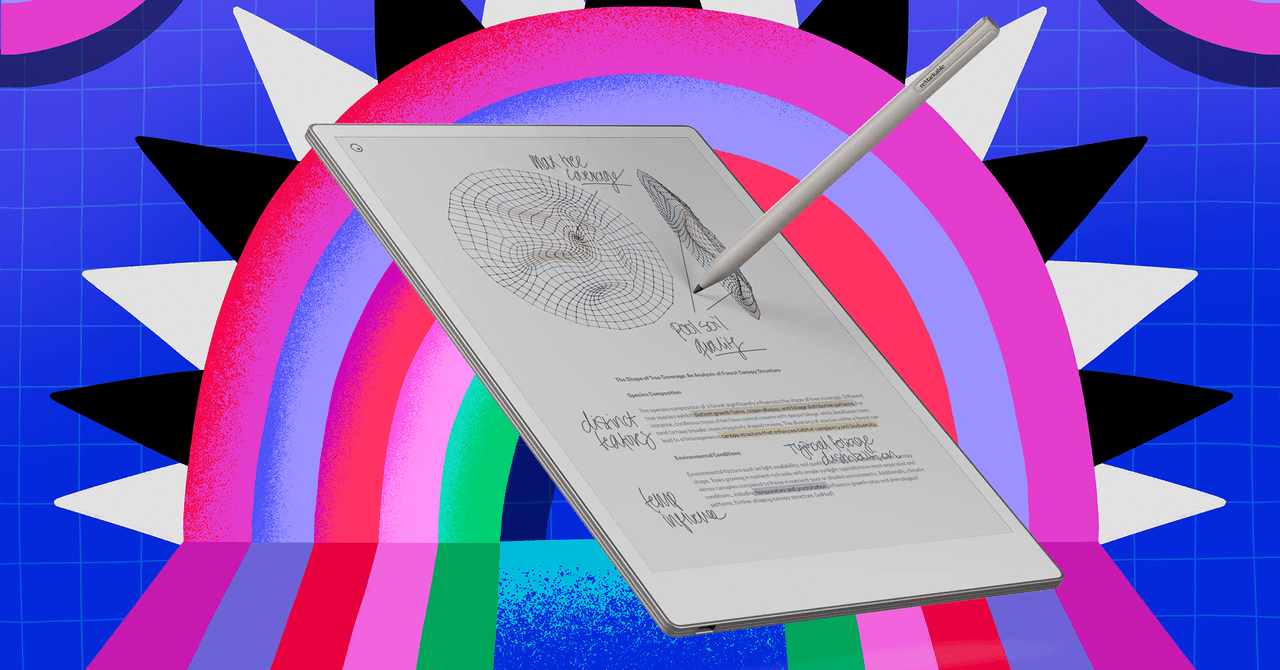Tech
ICO publishes summary of police facial recognition audit | Computer Weekly

The Information Commissioner’s Office (ICO) has completed its first-ever data protection audit of UK police forces deploying facial recognition technologies (FRT), noting it is “encouraged” by its findings.
The ICO’s audit, which investigated how South Wales Police and Gwent Police are using and protecting people’s personal information when deploying facial recognition, marks the first time the data regulator has formally audited a UK police force for its use of the technology.
According to an executive summary published on 20 August, the scope of the facial recognition audit – which was agreed with the two police forces beforehand – focused on questions of necessity and proportionality (a key legal test for the deployment of new technologies), whether its design meets expectations around fairness and accuracy, and whether “the end-to-end process” is compliant with the UK’s data protection rules.
“We are encouraged by the findings, which provide a high level of assurance that the processes and procedures currently in place at South Wales Police and Gwent Police are compliant with data protection law,” said the deputy commissioner for regulatory policy, Emily Keaney, in a blog post.
“The forces made sure there was human oversight from trained staff to mitigate the risk of discrimination and ensure no decisions are solely automated, and a formal application process to assess the necessity and proportionality before each LFR deployment,” she wrote.
The executive summary added that South Wales Police and Gwent Police have “comprehensively mapped” their data flows, can “demonstrate the lawful provenance” of the images used to generate biometric templates, and have appropriate data protection impact assessments (DPIAs) in place.
It further added that the data collected “is adequate, relevant and limited to what is necessary for its purpose”, and that individuals are informed about its use “in a clear and accessible manner”.
However, Keaney was clear that the audit only “serves as a snapshot in time” of how the technology is being used by the two police forces in question. “It does not give the green light to all police forces, but those wishing to deploy FRT can learn from the areas of assurance and areas for improvement revealed by the audit summary,” she said.
Commenting on the audit, chief superintendent Tim Morgan of the joint South Wales and Gwent digital services department, said: “The level of oversight and independent scrutiny of facial recognition technology means that we are now in a stronger position than ever before to be able to demonstrate to the communities of South Wales and Gwent that our use of the technology is fair, legitimate, ethical and proportionate.
“We welcome the work of the Information Commissioner’s Office audit, which provides us with independent assurance of the extent to which both forces are complying with data protection legislation.”
He added: “It is important to remember that use of this has never resulted in a wrongful arrest in South Wales and there have been no false alerts for several years as the technology and our understanding has evolved.”
Lack of detail
While the ICO provided a number of recommendations to the police forces, it did not provide any specifics in the executive summary beyond the priority level of the recommendation and whether it applied to the forces’ use of live or retrospective facial recognition (LFR or RFR).
For LFR, it said it made four “medium” and one “low” priority recommendations, while for RFR, it said it made six “medium” and four “low” priority recommendations. For each, it listed one “high” priority recommendation.
Computer Weekly contacted the ICO for more information about the recommendations, but received no response on this point.
Although the summary lists some “key areas for improvement” around data retention policies and the need to periodically review various internal procedures, key questions about the deployments are left unanswered by the ICO’s published material on the audit.
For example, before they can deploy any facial recognition technology, UK police forces must ensure their deployments are “authorised by law”, that the consequent interference with rights – such as the right to privacy – is undertaken for a legally “recognised” or “legitimate” aim, and that this interference is both necessary and proportionate. This must be assessed for each individual deployment of the tech.
However, beyond noting that processes are in place, no detail was provided by the ICO on how the police forces are assessing the necessity and proportionality of their deployments, or how these are assessed in the context of watchlist creation.
Although more detail on proportionality and necessity considerations is provided in South Wales Police’s LFR DPIA, it is unclear if any of the ICO’s recommendations concern this process.
While police forces using facial recognition have long maintained that their deployments are intelligence-led and focus exclusively on locating individuals wanted for serious crimes, senior officers from the Metropolitan Police and South Wales Police previously admitted to a Lords committee in December 2023 that both forces select images for their watchlists based on crime categories attached to people’s photos, rather than a context-specific assessment of the threat presented by a given individual.
Computer Weekly asked the ICO whether it is able to confirm if this is still the process for selecting watchlist images at South Wales Police, as well as details on how well police are assessing the proportionality and necessity of their deployments generally, but received no response on these points.
While the ICO summary claims the forces are able to demonstrate the “lawful provenance” of watchlist images, the regulator similarly did not respond to Computer Weekly’s questions about what processes are in place to ensure that the millions of unlawfully held custody images in the Police National Database (PND) are not included in facial recognition watchlists.
Computer Weekly also asked why the ICO is only beginning to audit police facial recognition use now, given that it was first deployed by the Met in August 2016 and has been controversial since its inception.
“The ICO has played an active role in the regulation of FRT since its first use by the Met and South Wales Police around 10 years ago. We investigated the use of FRT by the Met and South Wales and Gwent police and produced an accompanying opinion in 2021. We intervened in the Bridges case on the side of the claimant. We have produced follow-up guidance on our expectations of police forces,” said an ICO spokesperson.
“We are stepping up our supervision of AI [artificial intelligence] and biometric technologies – our new strategy includes a specific focus on the use of FRT by police forces. We are conducting an FRT in Policing project under our AI and biometrics strategy. Audits form a core part of this project, which aims to create clear regulatory expectations and scalable good practice that will influence the wider AI and biometrics landscape.
“Our recommendations in a given audit are context-specific, but any findings that have applicability to other police forces will be included in our Outcomes Report due in spring 2026, once we have completed the rest of the audits in this series.”
EHRC joins judicial review
In mid-August 2025, the Equality and Human Rights Commission (EHRC) was granted permission to intervene in an upcoming judicial review of the Met Police’s use of LFR technology, which it claims is being deployed unlawfully.
“The law is clear: everyone has the right to privacy, to freedom of expression and to freedom of assembly. These rights are vital for any democratic society,” said EHRC chief executive John Kirkpatrick.
“As such, there must be clear rules which guarantee that live facial recognition technology is used only where necessary, proportionate and constrained by appropriate safeguards. We believe that the Metropolitan Police’s current policy falls short of this standard.”
He added: “The Met, and other forces using this technology, need to ensure they deploy it in ways which are consistent with the law and with human rights.”
Writing in a blog about the EHRC joining the judicial review, Chris Pounder, director of data protection training firm Amberhawk, said that, in his view, the statement from Kirkpatrick is “precisely the kind of statement that should have been made by” information commissioner John Edwards.
“In addition, the ICO has stressed the need for FRT deployment ‘with appropriate safeguards in place’. If he [Edwards] joined the judicial review process as an interested party, he could get judicial approval for these much vaunted safeguards (which nobody has seen),” he wrote.
“Instead, the ICO sits on the fence whilst others determine whether or not current FRT processing by the Met Police is ‘strictly necessary’ for its law enforcement functions. The home secretary, for her part, has promised a code of practice which will contain an inevitable bias in favour of the deployment of FRT.”
In an appearance before the Lords Justice and Home Affairs Committee on 8 July, home secretary Yvette Cooper confirmed the government is actively working with police forces and unspecified “stakeholders” to draw up a new governance framework for police facial recognition.
However, she did not comment on whether any new framework would be placed on a statutory footing.
Tech
I’ve Tried Every Digital Notebook. Here Are the Best Ones on Sale

I love a digital notebook. I write about them all year long here at WIRED, and it’s not often my favorites go on sale. (Or for any to go on sale, besides Amazon’s own sale events.) But this year, multiple digital notebooks I love are on sale for the biggest sale event of the year.
If you’ve thought about getting one of these for yourself, there’s truly no better moment. From reMarkable’s on-sale bundles to Kobo’s deals, you can shop five of the best digital notebooks we’ve ever tried right now at a lower price than you might find until next year. They’re a handy device just about everyone can enjoy, whether you want to digitally annotate your books or write out your grocery list without using a piece of paper.
Looking for more great sales to shop? Don’t miss our guides to the Best Amazon Device and Kindle Deals, Best Laptop Deals, the Absolute Best Cyber Monday Deals, and our liveblog.
Update Dec. 1: We updated prices, links, and deals, and added the Rocketbook Fusion Plus notebook.
The Best Digital Notebook Deals
Some of the best digital notebooks we’ve tried come from reMarkable, and one of reMarkable’s models always seems to reign supreme over our digital notebooks guide. While the Paper Pro Move is the newest model, the reMarkable Paper Pro that launched in September 2024 is my current all-around favorite. It’s not only powerful with tons of tools and an easy interface, but packs a color screen for colorful notes. It also has a gentle front light so that you can use it in darker environments. You can get the bundles on sale right now, so combine one of reMarkable’s markers and folio covers with a Paper Pro to get $50 off.
The best discount from reMarkable is actually for its older device and our previous top pick, the reMarkable 2. It doesn’t have a color screen or the front light, but you’ll get the reMarkable’s great software and options for accessories like the Keyboard Folio to use it like a laptop. The reMarkable 2 bundles are also on sale, so add on your favorite folio of choice on reMarkable’s website to get $70 off.
The Kobo Libra Colour is my favorite all-around e-reader with its color screen and page turner buttons, but you can add on a stylus to have it double as a digital notebook. It’s one of the more affordable options, and it’s a smaller screen than the rest of these, but I especially love that you can use the stylus to doodle on the books you’re reading (something you can’t do with the Kindle Scribe). It’s $30 off on Kobo’s site for Cyber Monday.
The second-generation Kindle Scribe isn’t the best digital notebook, but the long battery life (12 weeks!!) and convenient starting point of it being a Kindle I could already be reading on makes it a great go-to for casual notetakers and doodlers. It’s a good choice for Kindle and Amazon users, and there are new models due out this winter, but they likely won’t be as cheap as this one. (Especially since some of those new models will have color!)
If you like the idea of getting a Kobo e-reader that doubles as a digital notebook, you can go for more of a classic size with the larger Elipsa 2E. This one comes with the stylus, so you won’t have to add it on, and it’s $50 off.
The Rocketbook Fusion Plus digital planner and notebook is for those who don’t want to charge their notebook or give up on the whole “paper” experience. Take notes with the included, erasable Pilot Frixion Pen, scan photos of the pages into the app, and erase the whole thing with the damp microfiber cloth (also included). Fusion Plus is on its steepest discount of recent memory, and comes templates that range from monthly and weekly pages to project management and meeting notes.
Power up with unlimited access to WIRED. Get best-in-class reporting and exclusive subscriber content that’s too important to ignore. Subscribe Today.
Tech
Artificial tendons give muscle-powered robots a boost

Our muscles are nature’s actuators. The sinewy tissue is what generates the forces that make our bodies move. In recent years, engineers have used real muscle tissue to actuate “biohybrid robots” made from both living tissue and synthetic parts. By pairing lab-grown muscles with synthetic skeletons, researchers are engineering a menagerie of muscle-powered crawlers, walkers, swimmers, and grippers.
But for the most part, these designs are limited in the amount of motion and power they can produce. Now, MIT engineers are aiming to give bio-bots a power lift with artificial tendons.
In a study appearing today in the journal Advanced Science, the researchers developed artificial tendons made from tough and flexible hydrogel. They attached the rubber band-like tendons to either end of a small piece of lab-grown muscle, forming a “muscle-tendon unit.” Then they connected the ends of each artificial tendon to the fingers of a robotic gripper.
When they stimulated the central muscle to contract, the tendons pulled the gripper’s fingers together. The robot pinched its fingers together three times faster, and with 30 times greater force, compared with the same design without the connecting tendons.
The researchers envision the new muscle-tendon unit can be fit to a wide range of biohybrid robot designs, much like a universal engineering element.
“We are introducing artificial tendons as interchangeable connectors between muscle actuators and robotic skeletons,” says lead author Ritu Raman, an assistant professor of mechanical engineering (MechE) at MIT. “Such modularity could make it easier to design a wide range of robotic applications, from microscale surgical tools to adaptive, autonomous exploratory machines.”
The study’s MIT co-authors include graduate students Nicolas Castro, Maheera Bawa, Bastien Aymon, Sonika Kohli, and Angel Bu; undergraduate Annika Marschner; postdoc Ronald Heisser; alumni Sarah J. Wu ’19, SM ’21, PhD ’24 and Laura Rosado ’22, SM ’25; and MechE professors Martin Culpepper and Xuanhe Zhao.
Muscle’s gains
Raman and her colleagues at MIT are at the forefront of biohybrid robotics, a relatively new field that has emerged in the last decade. They focus on combining synthetic, structural robotic parts with living muscle tissue as natural actuators.
“Most actuators that engineers typically work with are really hard to make small,” Raman says. “Past a certain size, the basic physics doesn’t work. The nice thing about muscle is, each cell is an independent actuator that generates force and produces motion. So you could, in principle, make robots that are really small.”
Muscle actuators also come with other advantages, which Raman’s team has already demonstrated: The tissue can grow stronger as it works out, and can naturally heal when injured. For these reasons, Raman and others envision that muscly droids could one day be sent out to explore environments that are too remote or dangerous for humans. Such muscle-bound bots could build up their strength for unforeseen traverses or heal themselves when help is unavailable. Biohybrid bots could also serve as small, surgical assistants that perform delicate, microscale procedures inside the body.
All these future scenarios are motivating Raman and others to find ways to pair living muscles with synthetic skeletons. Designs to date have involved growing a band of muscle and attaching either end to a synthetic skeleton, similar to looping a rubber band around two posts. When the muscle is stimulated to contract, it can pull the parts of a skeleton together to generate a desired motion.
But Raman says this method produces a lot of wasted muscle that is used to attach the tissue to the skeleton rather than to make it move. And that connection isn’t always secure. Muscle is quite soft compared with skeletal structures, and the difference can cause muscle to tear or detach. What’s more, it is often only the contractions in the central part of the muscle that end up doing any work — an amount that’s relatively small and generates little force.
“We thought, how do we stop wasting muscle material, make it more modular so it can attach to anything, and make it work more efficiently?” Raman says. “The solution the body has come up with is to have tendons that are halfway in stiffness between muscle and bone, that allow you to bridge this mechanical mismatch between soft muscle and rigid skeleton. They’re like thin cables that wrap around joints efficiently.”
“Smartly connected”
In their new work, Raman and her colleagues designed artificial tendons to connect natural muscle tissue with a synthetic gripper skeleton. Their material of choice was hydrogel — a squishy yet sturdy polymer-based gel. Raman obtained hydrogel samples from her colleague and co-author Xuanhe Zhao, who has pioneered the development of hydrogels at MIT. Zhao’s group has derived recipes for hydrogels of varying toughness and stretch that can stick to many surfaces, including synthetic and biological materials.
To figure out how tough and stretchy artificial tendons should be in order to work in their gripper design, Raman’s team first modeled the design as a simple system of three types of springs, each representing the central muscle, the two connecting tendons, and the gripper skeleton. They assigned a certain stiffness to the muscle and skeleton, which were previously known, and used this to calculate the stiffness of the connecting tendons that would be required in order to move the gripper by a desired amount.
From this modeling, the team derived a recipe for hydrogel of a certain stiffness. Once the gel was made, the researchers carefully etched the gel into thin cables to form artificial tendons. They attached two tendons to either end of a small sample of muscle tissue, which they grew using lab-standard techniques. They then wrapped each tendon around a small post at the end of each finger of the robotic gripper — a skeleton design that was developed by MechE professor Martin Culpepper, an expert in designing and building precision machines.
When the team stimulated the muscle to contract, the tendons in turn pulled on the gripper to pinch its fingers together. Over multiple experiments, the researchers found that the muscle-tendon gripper worked three times faster and produced 30 times more force compared to when the gripper is actuated just with a band of muscle tissue (and without any artificial tendons). The new tendon-based design also was able to keep up this performance over 7,000 cycles, or muscle contractions.
Overall, Raman saw that the addition of artificial tendons increased the robot’s power-to-weight ratio by 11 times, meaning that the system required far less muscle to do just as much work.
“You just need a small piece of actuator that’s smartly connected to the skeleton,” Raman says. “Normally, if a muscle is really soft and attached to something with high resistance, it will just tear itself before moving anything. But if you attach it to something like a tendon that can resist tearing, it can really transmit its force through the tendon, and it can move a skeleton that it wouldn’t have been able to move otherwise.”
The team’s new muscle-tendon design successfully merges biology with robotics, says biomedical engineer Simone Schürle-Finke, associate professor of health sciences and technology at ETH Zürich.
“The tough-hydrogel tendons create a more physiological muscle–tendon–bone architecture, which greatly improves force transmission, durability, and modularity,” says Schürle-Finke, who was not involved with the study. “This moves the field toward biohybrid systems that can operate repeatably and eventually function outside the lab.”
With the new artificial tendons in place, Raman’s group is moving forward to develop other elements, such as skin-like protective casings, to enable muscle-powered robots in practical, real-world settings.
This research was supported, in part, by the U.S. Department of Defense Army Research Office, the MIT Research Support Committee, and the National Science Foundation.
Tech
The Best Cyber Monday Streaming Deals With a Convenient Roommate’s Email Address

HBO knows you’re bored and cold. It wants you to Max and chill with Noah Wyle in scrubs. The company offers some of the best Cyber Monday streaming deals with a ridiculously low-priced $3/month offer for basic HBO Max (it’s the version with ads and 2K streaming, but still, super-cheap). Disney Plus and Hulu deals are bundled up for $5/month. Apple TV wants back in your life for $6.
Of course, this deal is only meant for new customers. Not boring ol’ existing customers. If you already have basic HBO Max, you’re already paying $11 for the same service, and HBO would like you to keep doing that. Streaming apps are banking on you being complacent and happy in your streaming life. Maybe they’re even taking you for granted.
Sometimes you can get the current deal just by threatening to cancel, or actually canceling, your account. Suddenly, you’re an exciting new customer again! Another method is by using an alternate email account (perhaps your spouse’s or roommate’s?) and alternate payment information as a new customer. If you do use a burner email (you did not hear this from me), check in on your favorite app’s terms of service to make sure you’re not in violation by re-enrolling with different emails. I’ll also issue the caveat that you lose all your viewing data and tailored suggestions if you sign up anew.
But times and wallets are tight! And $3 HBO Max sounds pretty good. After all, every middle-aged American man needs to rewatch The Wire once every five years or so—assuming he’s not the kind of middle-aged man who rewatches The Sopranos instead. Here are the current best streaming deals for Cyber Monday 2025.
Devon Maloney; ARCHIVE ID: 546772
Regular price: $80
-

 Sports1 week ago
Sports1 week agoWATCH: Ronaldo scores spectacular bicycle kick
-

 Entertainment1 week ago
Entertainment1 week agoWelcome to Derry’ episode 5 delivers shocking twist
-

 Politics1 week ago
Politics1 week agoWashington and Kyiv Stress Any Peace Deal Must Fully Respect Ukraine’s Sovereignty
-

 Business1 week ago
Business1 week agoKey economic data and trends that will shape Rachel Reeves’ Budget
-

 Tech6 days ago
Tech6 days agoWake Up—the Best Black Friday Mattress Sales Are Here
-

 Politics1 week ago
Politics1 week ago53,000 Sikhs vote in Ottawa Khalistan Referendum amid Carney-Modi trade talks scrutiny
-

 Fashion1 week ago
Fashion1 week agoCanada’s Lululemon unveils team Canada kit for Milano Cortina 2026
-

 Tech1 day ago
Tech1 day agoGet Your Steps In From Your Home Office With This Walking Pad—On Sale This Week



-Reviewer-Photo-SOURCE-Nena-Farrell.jpg)










